In the crypto market, 3000 yuan is about 440 U. I will share an executable plan. If you can execute it, it is possible to turn 3000 into 1 million.
From 2024 to 2025, I went from 100,000 to around 42 million yuan, using a very simple but practical method for trading cryptocurrencies that allows you to "always profit!" I entered the crypto market with 100,000 and made a profit of 10 million, then went into debt of 8 million, then profited 42 million, and now I am financially free. In the past two years, specifically from 2024 to 2025, I turned less than 200,000 into a return rate of 418134.86%, achieving over 42 million.
Here are some practical and useful tips for newcomers to the crypto market! My trading method is very simple and practical; I turned it into an 8-digit figure in just one year, relying solely on 11 chart patterns to enter the market. I only trade when I see a pattern. I have maintained a win rate of over 90% for five years!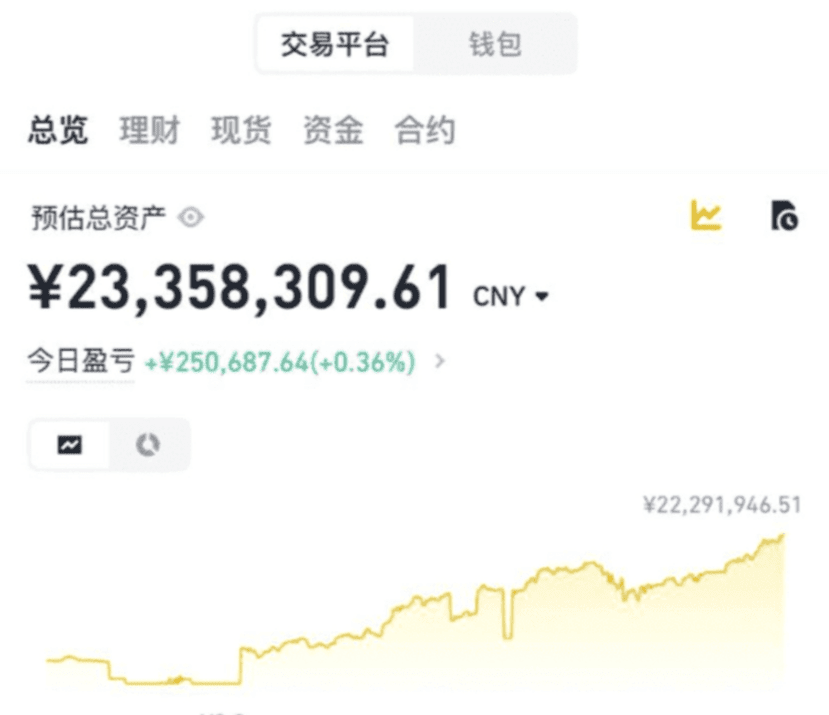
I spent 5 years reviewing 400 charts every night, turning 11,000 into 18 million, relying solely on 11 chart patterns, achieving a win rate of 100%—undefeated. Through my own practice, I have also achieved a win rate of 100%. I will整理 it in the next few days and share it with those who are fated to learn and master it, well worth collecting!
1. Cup and Handle Pattern:
The cup and handle pattern is an adjustment shape after a strong rise in the coin. Generally, a coin will experience about 2 to 4 months of intense volatility, followed by market adjustments. During the pullback, the coin will face selling pressure, dropping about 20% to 35% from the previous high, with the adjustment period typically lasting from 8 to 12 weeks, depending on the overall market conditions. When the coin price rises to challenge the previous high, it will face selling pressure from those who bought near or at the previous high. This selling pressure will cause the coin price to drop and consolidate sideways for about 4 days to 3 weeks. The handle portion is usually about 5% lower than the previous high, and a lower handle typically indicates a flawed coin, meaning a higher risk of failure.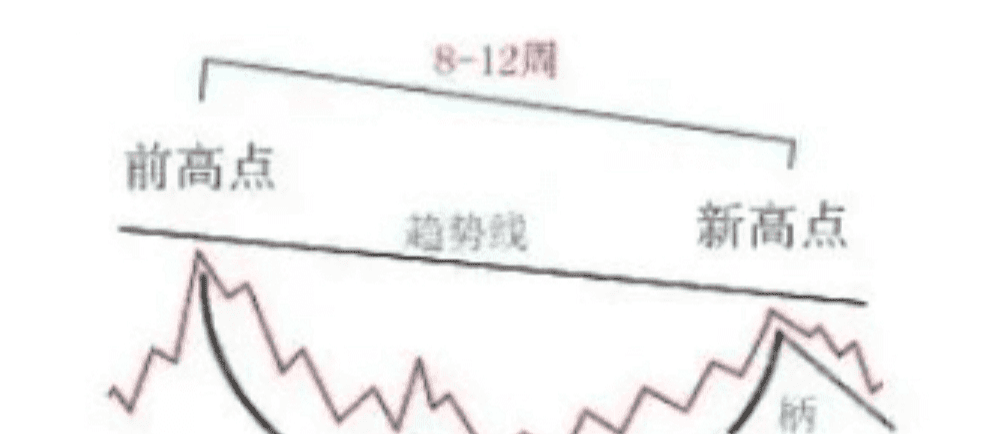
The buying opportunity for this coin is when it rises to the new high at the top of the handle, rather than touching the previous high from 8 to 12 weeks ago. This is one of the best and most reliable shapes, and it's important to note that stocks exhibiting this shape usually appear at the beginning of a market trend after sufficient adjustments, rather than during or at the end of a significant market rise.
2. Flat Bottom:
A flat bottom is a chart pattern that moves horizontally across any time frame. This pattern can achieve very strong upward movements. What we are looking for is when the coin price remains at a horizontal or approximately the same level and the volume shows exhaustion. Draw a trend line at the top of this flat bottom, and when the price breaks through the trend line with increased volume, that’s when to buy.
3. Ascending Triangle:
The ascending triangle is a variant of the symmetrical triangle, generally regarded as the most reliable bullish formation in an uptrend. The top of the triangle is flat, while the bottom slopes upwards.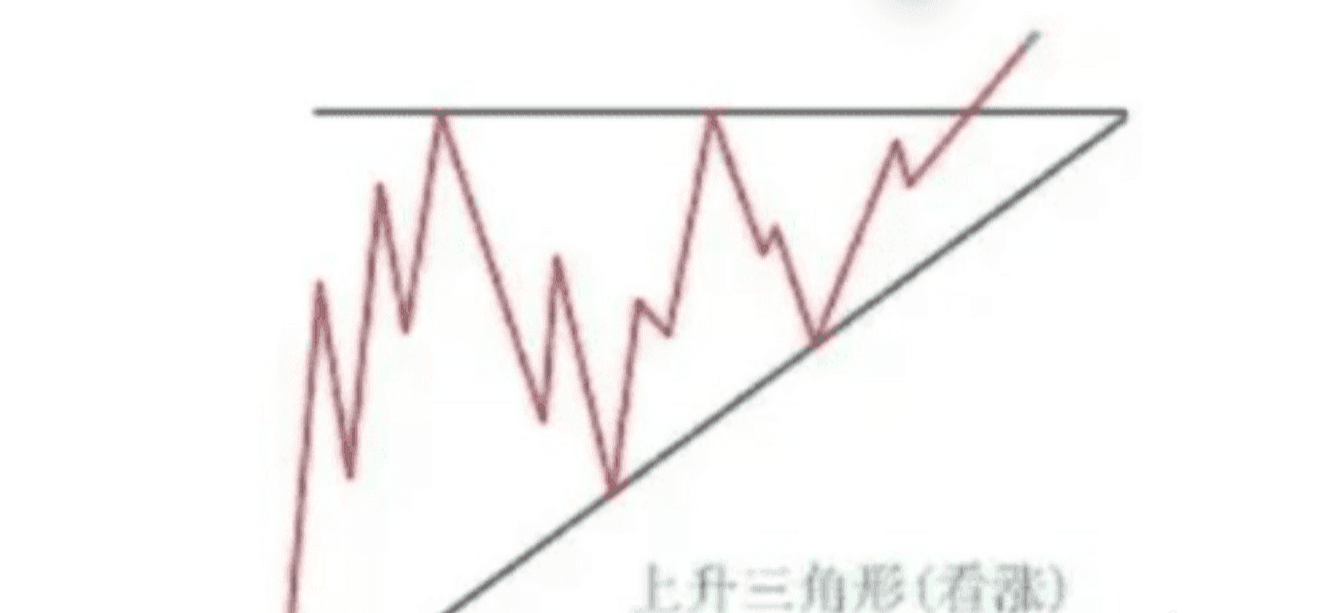
In an ascending triangle, stocks become overbought, and prices reverse downwards. Subsequently, buying re-enters the market, and prices quickly reach historical highs, only to fall back again. Buying will reappear, although the price will be higher than before. The price eventually breaks through the previous peak, and with the arrival of new buying, prices will be pushed higher. In the case of a symmetrical triangle, breakouts are usually accompanied by a significant increase in volume.
4. Parabola:
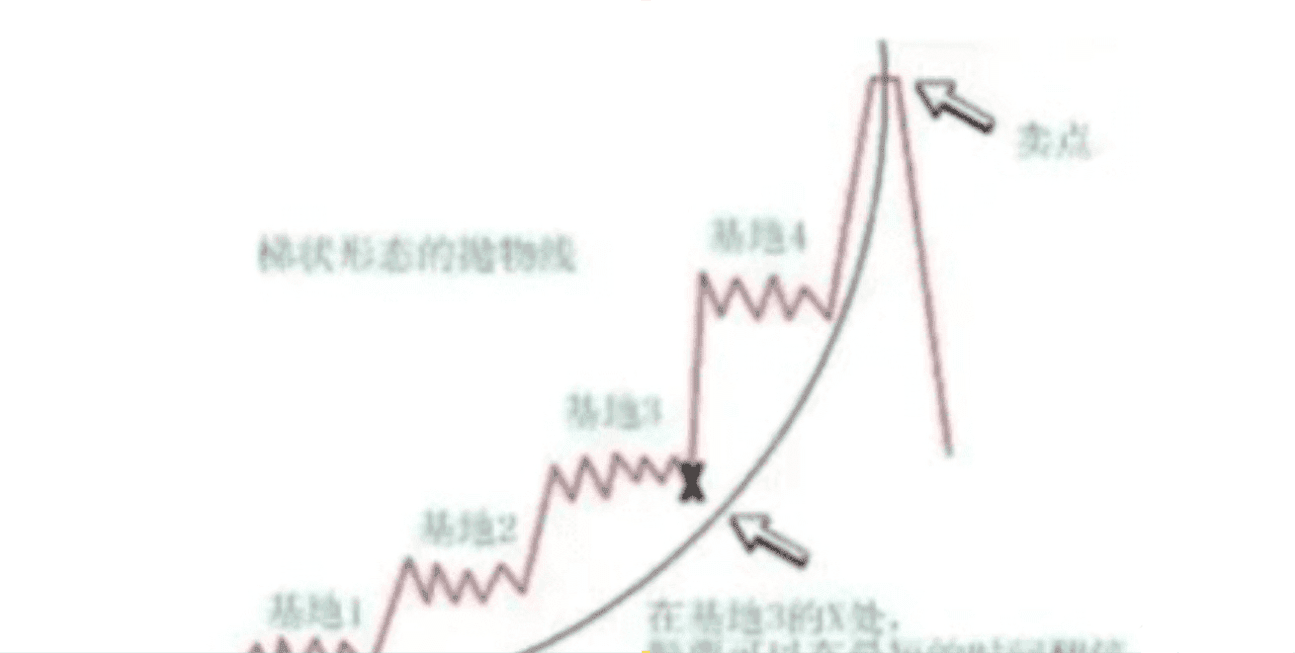
The parabolic pattern may be one of the most respected and favored patterns. This pattern can give you the maximum and fastest returns in the shortest time. Generally, you will find such patterns at the end or near the end of a major market rally. This pattern is the final result of multiple bases forming a breakout.
5. Wedge:
The formation of wedges looks similar to a symmetrical triangle because the trend lines intersect at their vertices; however, the distinction of wedges lies in their obvious slant, with both sides sloping. Like triangles, volume should decrease during the formation of a wedge and increase during the wedge dispersion. Here is a typical wedge trend pattern:

Descending wedges are generally considered bullish and usually appear in uptrends. However, they can also occur in downtrends, but this still means they are bullish overall. This chart pattern consists of a series of lower highs and lower lows.
Rising wedges are generally considered bearish and typically appear in downtrends. They can also be found in uptrends but are still usually viewed as bearish. Rising wedges consist of a series of higher highs and higher lows.
Channel:
Channel patterns are generally considered continuation patterns. They represent a zone of indecision and usually move in the direction of the trend. Of course, the trend lines move parallel within the rectangular area, representing a nearly balanced current supply and demand, where buyers and sellers appear evenly matched. The same highs will continually be challenged, and the same lows will also be repeatedly challenged, with the coin fluctuating between the two clearly defined parameters. Although volume does not seem to be affected as in other patterns, it typically decreases within the pattern, but like other coins, volume should significantly increase at the breakout.
7. Symmetrical Triangle:
The symmetrical triangle can be described as an area of indecision, where the market stagnates and the future direction is questioned. Typically, the forces of supply and demand at that time are considered almost equal.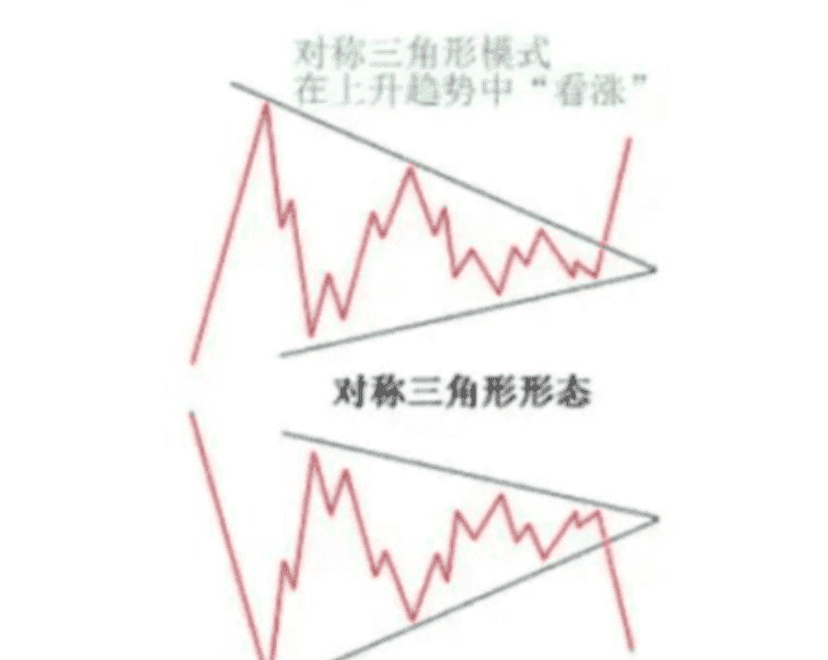
The buying pressure pushing the coin price up quickly encounters selling pressure, while falling prices are seen as buying at a discount. Each new lower high and higher low becomes narrower than before, forming a sideways triangular shape. (During this time, volume tends to decrease.) (Usually occurs with massive volume). Eventually, this indecision will end, often beginning a breakout from this shape. Studies show that symmetrical triangles overwhelmingly reverse in the direction of the trend. In my view, symmetrical triangles are very practical and should be traded as continuation patterns.
8. Descending Triangle:
The descending triangle is also a variant of the symmetrical triangle, usually regarded as bearish and typically appearing in downtrends.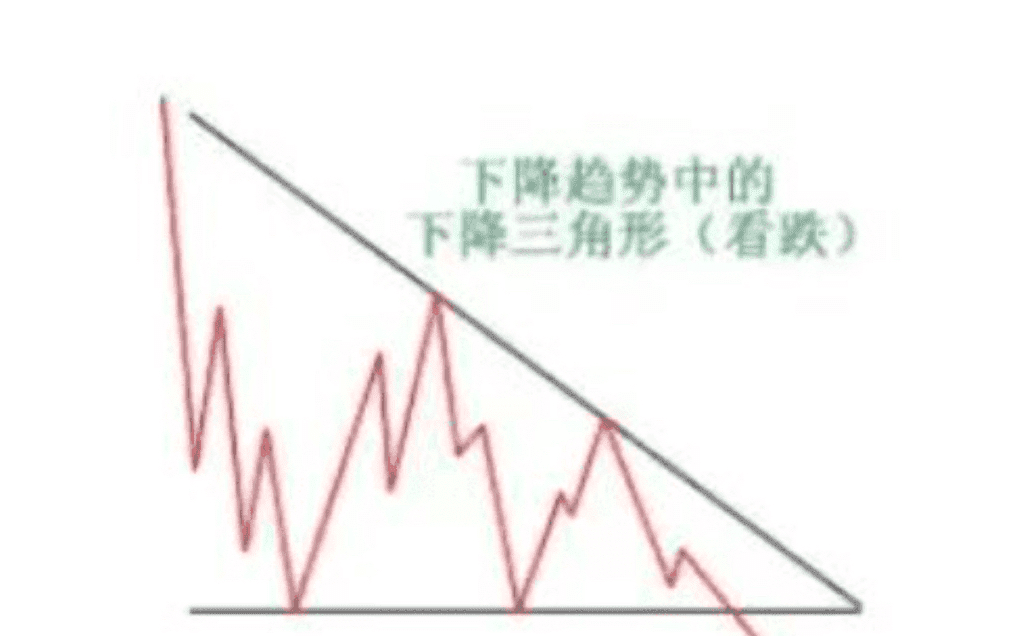
Unlike the ascending triangle, this triangle's bottom appears flat. One side of the triangle's top slopes downward. The price will drop to an oversold level, then show tentative buying at the low point, causing the price to recover.
However, higher prices attract more sellers, and the price continues to challenge previous lows. Next, buyers tentatively re-enter the market, but as the price rises, it attracts even more sellers again. Ultimately, sellers take control, breaking through the previous low of this pattern, while previous buyers rush to sell their positions. Like the symmetrical triangle and ascending triangle, volume will continuously decrease during the formation of the pattern, only to expand at the breakout.
9. Flag and Pennant Patterns:
Flags and pennants can be categorized as continuation patterns. They usually represent a brief pause in dynamic coins, typically appearing after a rapid and substantial rise, where the coin usually rises again in the same direction. Studies show that these patterns are relatively reliable continuation patterns.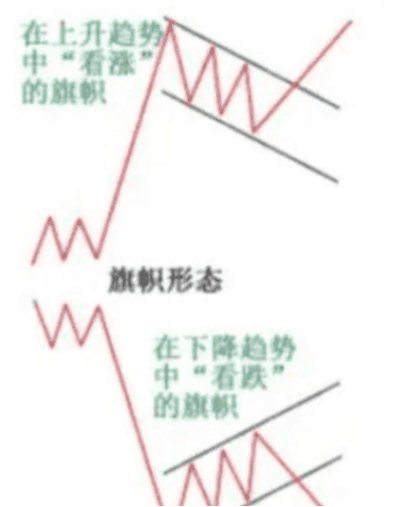

1. The characteristics of a bullish flag are lower highs and lower lows, with the slope direction opposing the trend. However, unlike wedge lines, their trend lines are parallel.
2. Bearish signals are characterized by higher highs and higher lows, and the 'bear market' flags also have a counter-trend inclination. Their trend lines are also parallel. The triangle flag looks very much like a symmetrical triangle, but triangle flags are usually smaller in size (volatility) and duration, with volume typically shrinking during the stagnation period and expanding at the breakout.
10. Head and Shoulders:
Head and shoulders are usually considered reversal patterns and are the most reliable when appearing in an uptrend. Ultimately, the market begins to slow down, and the forces of supply and demand are generally considered balanced.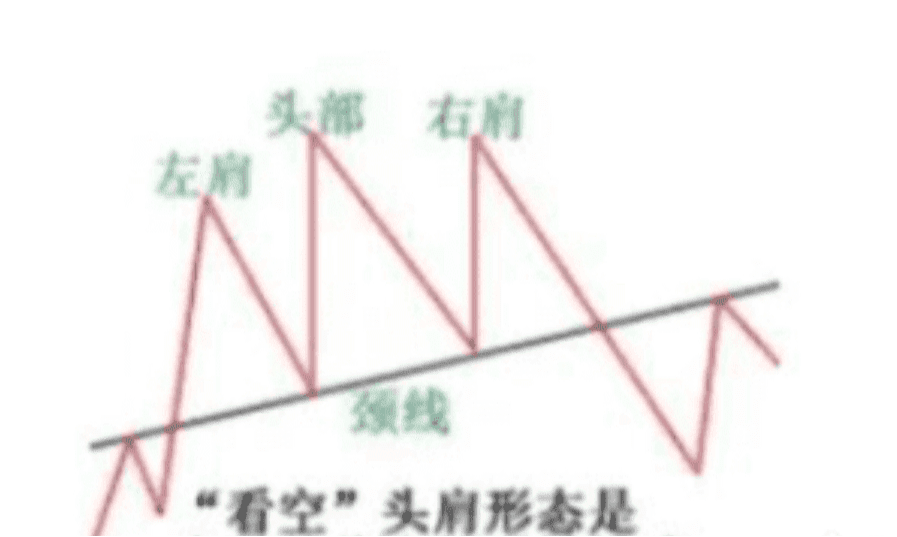
Sellers unload at the high point (left shoulder), beginning a tentative decline. Buyers quickly return to the market, eventually pushing prices to a new high (head). However, the new high quickly falls back, undergoing another test of the decline (neckline continuation). Tentative buying emerges again, and the market rebounds, but fails to break the previous high. (The last peak is considered the right shoulder.)
Volume is very important in the head and shoulders pattern, generally following the price increase of the left shoulder. However, the head is formed in a situation of decreasing volume, indicating that buyers are no longer as aggressive as before. The volume on the right shoulder may even be smaller than on the head, suggesting that buyers may have exhausted themselves. New sellers enter, and former buyers exit. When the market breaks the neckline, the diagram becomes complete. (Volume will increase at the breakout.)
11. Inverted Head and Shoulders:
The head and shoulders pattern can sometimes be inverted; the inverted head and shoulders pattern typically appears in downtrends, and its volume aspect is worth noting.
1. The inverted left shoulder should be accompanied by an increase in volume.
2. The inverted head should form with smaller volume.
3. However, rebounds from the head should show greater volume than rebounds from the left shoulder.
4. The volume of the inverted right shoulder should be the smallest.
5. When the coin price rebounds to the neckline, the volume should increase significantly. New buyers enter, and previous sellers exit.
When the market breaks the neckline, the diagram becomes complete. (Volume will increase at the breakout.)
In the first few years of trading, like many others, I stayed up late every day, chasing rises and falls, losing sleep over losses. Later, I gritted my teeth and stuck to a simple method, surprisingly surviving and gradually stabilizing my profits.
Looking back now, this method, although simple, is effective: "If I don't see signals I'm familiar with, I firmly don't act!"
It’s better to miss opportunities than to make random trades. Following this strict rule, I can now stabilize my annual return rate above 50%, and I no longer have to rely on luck to survive.
Here are a few safety tips for beginners, all based on my practical loss experiences:
1. Only trade after 9 PM. News during the day is too chaotic, with various false positives and negatives flying around, causing the market to jump erratically, making it easy to get trapped. I generally wait until after 9 PM to operate, as the news is more stable at that time, and the candlestick patterns are cleaner and clearer.
2. Cash out immediately after making a profit. Don't always think about doubling your money! For example, if you made a profit of 1000 U today, I suggest you immediately withdraw 300 U to your bank account and continue playing with the rest. I've seen too many people who think after making three times their money that they can make five times, only to lose everything on a pullback.
3. Look at the indicators, not just your feelings. Don’t trade based on feelings; that’s blind gambling.
On your phone, install TradingView and check these indicators before trading:
· MACD: Are there golden or dead crosses?
· RSI: Is there overbought or oversold?
· Bollinger Bands: Is there a squeeze or breakout?
At least two of the three indicators must give consistent signals before considering entering the market.
4. Stop-loss should be flexible. When you have time to monitor the market, if you are in profit, manually adjust the stop-loss price upwards. For example, if your buying price is 1000 and it rises to 1100, raise the stop-loss to 1050 to protect profits. However, if you need to go out and can’t monitor, you must set a hard stop-loss of 3% to prevent sudden crashes.
5. Withdraw every week. Unwithdrawn profits are just a number game! I consistently transfer 30% of my profits to my bank account every Friday, and continue to roll over the rest. This way, over time, the account will keep growing.
6. There are tricks to reading candlesticks.
· Trade short-term, look at the 1-hour chart: If the price has two consecutive bullish candles, consider going long. If the market is stagnant, switch to the 4-hour chart to find support lines: consider entering when it approaches the support level.
7. Be careful not to fall into these traps! · Do not exceed 10x leverage; beginners should ideally keep it under 5x. Avoid coins like Dogecoin and shitcoins, which are easy to get wrecked.
Make a maximum of 3 trades a day; too many can easily lead to loss of control. Absolutely do not use leverage for cryptocurrency trading! The last sentence I want to share with you: Trading cryptocurrencies is not gambling; treat it as a job, clock in and out every day, shut down when the time is up, eat when it’s time, sleep when it’s time, and you will find that your profits become more stable.
Finally, let me say something heart-wrenching.
There is no guaranteed method for making profits in the crypto market, only a game of probabilities. The essence of the pullback confirmation rule is to use rules to counter human nature—stay calm when others panic, and restrain yourself when others are overexcited.
Playing in the crypto world is essentially a battle between retail investors and big players. If you don’t have advanced news or firsthand information, you can only be cut!
Still, I’ll say this: if you don’t know how to trade in a bull market, click on my avatar, follow me, and I will share my plans for bull market spot trading and contract trading for free.

